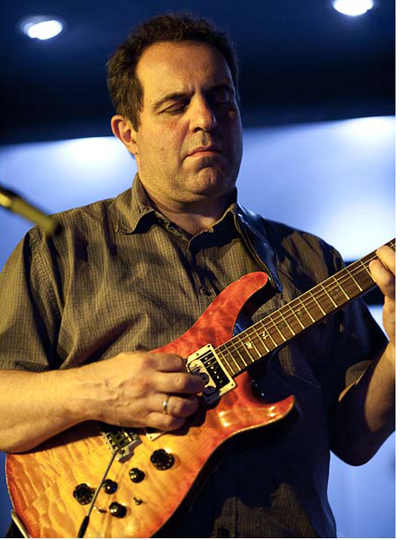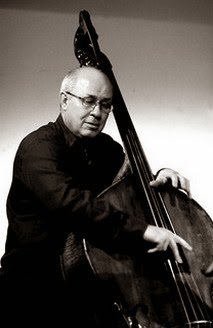Share This
Album at a Glance
Tags
Related Posts
Kenny Wheeler: Songs for Quintet
Posted by Robert Tefft on Mar 24, 2015 in Jazz | 0 comments
When it came to music, Kenny Wheeler was everywhere and fit in anywhere. Players that crossed the spectrum, from Tubby Hayes to Derek Bailey, knew him as a singular trumpet voice of seldom-equaled musicality. Settling in London in 1952 after leaving his native Toronto, he became a go-to sideman and an inspiring leader for more than sixty years.
Before emerging as a leading composer and bandleader, Wheeler cut his teeth accompanying British jazz mainstays such as John Dankworth and Ronnie Scott in the 1950s and 1960s. I first heard him with Anthony Braxton, whom he worked with from 1971 until 1976. He was a standout presence on Bill Bruford’s 1978 Feels So Good and David Sylvian’s 1984 album Brilliant Trees. As leader, he snared Keith Jarrett as a sideman on his 1975 ECM debut GNU High, and scored another career highlight playing with Bill Frisell on 1997’s Angel Song.
His final recording, Songs For Quintet (ECM), was first released in Europe on January 12th, 2015, on what would have been his 85th birthday. The band, consisting of Kenny Wheeler (flugelhorn), Stan Sulzmann (tenor saxophone), John Parricelli (guitar), Chris Laurence (bass) and Martin France (drums) performed nine Wheeler compositions, six newly recorded and three recorded previously.
The first thing this disc reveals is a tentative yet poignant quality to Kenny’s flugelhorn playing. The contrast between his airy tone and the sharper, more precise tenor saxophone of Stan Sulzmann creates an intergenerational dialogue unlike anything I have heard lately. You can liken it to an older, more experienced voice leading the way for a knowing but less experienced acolyte. The attentive, appreciative listener will find this captivating upon repeated plays. This, together with the brilliant yet sensitive rhythm section, creates an album all the more engaging with each and every spin.
Album highlights include “Cantor No. 1,” which opens with a bass solo morphing into a bass line that sounds positively heroic after the haunting music of the preceding three tracks. “Sly Eyes” is a march reminiscent of “Sketches In Spain” but with a small group flavor. The more experimental “1076” follows, to remind you that a bit of freedom can lead to a burst of illumination. Last up on this list, “Pretty Liddle Waltz,” provides the best illustration of the Wheeler-Sulzmann harmonious contrast as well as a great melody to savor along with the disc and the late leader who made it, Kenny Wheeler.
Songs for Quintet, Kenny Wheeler’s final recording, features compositions of relatively recent vintage, plus a fresh approach to “Old Time” – which the Azimuth trio used to play – and “Nonetheless”, a piece introduced on Angel Song. The album was recorded at London’s Abbey Road Studios with four of Kenny’s favourite players. Stan Sulzmann, John Parricelli, Chris Laurence and Martin France work together marvellously as an interactive unit, solo persuasively, and provide support for the tender and lyrical flugelhorn of the bandleader.
The session turned out to be the last occasion on which Kenny played with other musicians. He was not well enough to participate in what was intended to be a celebratory quintet gig shortly after the recording. If age and illness temper the strength of his sound on Songs for Quintet, the melodic imagination and the improvisational courage remain; the flugelhorn soloist could not be anybody but Kenny Wheeler. His exchanges with Stan Sulzmann throughout the album are full of charm, and indicative of the sense of friendship and mutual respect that characterises the whole band. Everybody’s looking out for the leader, which need not imply a reining in of energies. Listen to the roaring of the ensemble on the strangely-titled “1076”, for instance, and the way in which Kenny solos above the groundswell of drums and the thick swaths of electric guitar texture. This doesn’t fit conventional notions of “late music.”
The jaunty “Old Time,” whose bluesy impetus feels midway between Mingus and Adderley, may sound familiar to long-time ECM listeners. There is an earlier version entitled “How It Was Then,” with lyrics by Norma Winstone, which appeared on an Azimuth recording in 1994.
Waltzes were amongst Kenny’s favourite forms, and there are many in his discography. “A Pretty Liddle Waltz” is more than the characteristically self-effacing title suggests, its open spaces allowing Stan Sulzmann, Kenny and guitarist John Parricelli to stretch out. The tango “Sly Eyes” addresses more dramatic passions over its quasi-military beat. “Jigsaw” embodies a quality common to some of the loveliest of Kenny’s pieces. Built upon asymmetrical phrases that fit together according to their own logic, it flows in a manner entirely natural, eased along by Martin France’s drums, and with an elegant bass solo from Chris Laurence near the conclusion. Another bass feature, at the start of “Canter No. 1," sets up the tune for its initial cantering, due to evolve, behind Sulzmann’s powerful solo, into full-fledged gallop.
“The Long Waiting,” which Kenny previously recorded in a big band version, seems ideally suited to the quintet. This version conveys the atmosphere of austerity and openness that Wheeler liked so much, a beautiful melancholy expressed so very well in the solos of Parricelli and Sulzmann and in Kenny’s own vulnerable solo.
Kenny Wheeler (1930-2014) was an unassuming giant of modern jazz, a daring improviser, and a writer of many beautiful and slyly unorthodox tunes. His recorded legacy on ECM includes albums now regarded as contemporary jazz classics, such as Gnu High, Deer Wan, Music For Large And Small Ensembles and Angel Song.
Born in Toronto but based in England from 1952, Wheeler was, by the late 1960s, a highly regarded figure on the London scene, living a sort of double life – as a post-bop trumpeter and flugelhorn player inspired by Clifford Brown and Art Farmer and as a pioneering free player moving into unexplored territory in the company of improvisers including John Stevens, Evan Parker, Dave Holland and Derek Bailey. Jazz tradition and free experimentation would intermingle in Kenny’s palette as player and composer. As he put it, “the free stuff relaxed my conventional playing and the conventional playing gave shape to my free soloing,” and ideas discovered in improvising, especially a fondness for intervallic leaps, were subsequently deployed in his pieces. He cited Duke Ellington, Gil Evans and Stan Kenton as formative influences on his writing but also listened closely to classical and contemporary composition. Gesualdo, Debussy and Hindemith were favourites. Wheeler often said that Hindemith’s harmonies reminded him of McCoy Tyner. In his own writing, melody was the core, and he always found new ways to frame it, harmonically and rhythmically. In terms of emotional atmosphere, he found melancholy cheering. “Sad music makes me feel happy,” he said. “My favourite people in jazz are the ones who sound a bit sad. Billie Holiday, Miles Davis.”
Wheeler first came to ECM’s attention in 1970 when Chick Corea told Manfred Eicher to check out the soulful trumpeter then playing in a Hamburg workshop band. In 1975 Eicher invited Wheeler to New York for the recording of Gnu High, a now-legendary session with Keith Jarrett, Dave Holland and Jack DeJohnette. The album brought Kenny international press attention and recognition as more than a musicians’ musician. It was followed by many other ECM sessions: as a leader of his ensembles small and large, as a co-leader with John Taylor and Norma Winstone in Azimuth, as a member of Dave Holland’s Quintet, and as sideman or guest with John Abercrombie, Pierre Favre, Bill Frisell, Arild Andersen, George Adams, Rainer Brüninghaus, Ralph Towner and Leo Smith. He was also heard in the freewheeling contexts of Alexander von Schlippenbach’s Globe Unity and the Berlin Contemporary Jazz Orchestra – both of these adventurous big bands included Kenny Wheeler compositions in their respective repertoires.
Songs for Quintet was recorded at Abbey Road Studios in December 2013, and produced by Manfred Eicher and Steve Lake. The album is issued on January 14th, 2015, which would have been Kenny’s 85th birthday.
Source: ECM
 Kenny Wheeler |
Kenny Wheeler, flugelhorn
Kenneth Vincent John Wheeler, OC (14 January 1930 – 18 September 2014) was a Canadian composer and trumpet and flugelhorn player, based in the U.K. from the 1950s onwards. Most of his performances were rooted in jazz, but he was also active in free improvisation and occasionally contributed to rock music recordings. Wheeler wrote over one hundred compositions and was a skilled arranger for small groups and larger ensembles. Wheeler was the patron of the Royal Academy Junior Jazz course. Born in Toronto, Ontario, Wheeler began playing cornet at age 12, and became interested in jazz in his mid-teens. Wheeler spent a year studying composition at the Royal Conservatory in Toronto in 1950. In 1952 he moved to Britain. He found his way into the London jazz scene of the time, playing in groups led by Tommy Whittle, Tubby Hayes, and Ronnie Scott. Wheeler performed and recorded his own compositions with large jazz ensembles throughout his career, beginning with the first album under his own name, Windmill Tilter (1969), recorded with the John Dankworthband. A CD was released by BGO Records in September 2010. The big band album Song for Someone (1973) fused Wheeler’s characteristic orchestral writing with passages of free improvisation provided by musicians such as Evan Parker and Derek Bailey, and was also named Album of the Year by Melody Maker magazine in 1975. It has subsequently been reissued on CD by Parker’s Psi label. Songs for Quintet, recorded for ECM in December, 2013, was released on January 14, 2015, which would have been Wheeler’s 85th birthday. Source: Wikipedia |
|
Stan Sulzmann |
Stan Sulzmann, tenor saxophone
Stanley Ernest Sulzmann (b. 30 November 1948, London) is an English jazz saxophonist.Sulzmann began on saxophone at age 13 and played in Bill Ashton’s London Youth Jazz Orchestra, later the National Youth Jazz Orchestra. He studied at the Royal Academy of Music from 1969-1972. In the 1970s he played with the Clarke-Boland Big Band (1971), Mike Gibbs (1971), John Taylor and Kenny Wheeler, Volker Kriegel, Eberhard Weber, Zbigniew Seifert (1973), Phil Woods (1978), Clark Terry (1978), and Gordon Beck. In the 1980s he worked with Gil Evans (1983), Paul McCartney(1987), the European Jazz Ensemble (1983),the James Last Orchestra, the Hilversum Radio Orchestra, the Hamburg-based NDR Big Band, and the London Jazz Orchestra. Collaborations in the 1990s include with Allan Botschinsky, David Murray (1997), Paul Clarvis (1998), and Bruno Castellucci (1998). Television audiences around the world have heard him as the saxophone soloist in The Belgian Detective, the theme music to ITV’s Poirot, composed by Christopher Gunning.Sulzmann has held teaching positions at the Guildhall School of Music, the Royal Academy of Music, and Trinity College of Music. He is married with three sons: Gregory Sulzmann, Matthew Sulzmann and Ian Sulzman. Source: Wikipedia |
 John Parricelli |
John Parricelli, guitar
John Parricelli (born 1959) is a jazz guitarist, appearing and recording mainly in the United Kingdom.Parricelli began his career as a guitarist in 1982 and was one of the founding members of the British big band Loose Tubes, with whom he recorded three albums. He has worked with Annie Whitehead, Kenny Wheeler,Norma Winstone, Lee Konitz, Paul Motian, Tim Whitehead, Chris Laurence, Eddie Parker, Peter Erskine, Vince Mendoza, Mark Lockheart, Julian Argüelles, Iain Ballamy’s Acme, Mark Lockheart Quartet, Andy Sheppard,Gerard Presencer, Colin Towns, Martin Speake Quintet, and Jazz singer Stacey Kent among others.[1][2] In 2011 he appeared on stage with Peter Erskine and John Paul Jones at the Royal Opera House, London in the new opera Anna Nicole. Source: Wikipedia |
 Chris Laurence |
Chris Laurence, double bass
Chris Laurence (born 6 January 1949) is an English jazz double bassist born in London, perhaps most noteworthy for his 1980s work in various trios with Tony Oxley.In 1984, Laurence became a member of the “London Bach Orchestra.” Chris has also done collaborative work with other jazz artists, such as John Surman, Kenny Wheeler, John Taylor, Frank Ricotti and Alan Skidmore. Inspirations include Keith Jarrett, Miroslav Vitouš, Chick Corea and Tony Coe. He recently formed the Chris Laurence Quartet and released his début album New View. Source: Wikipedia |
 Martin France |
Martin France, drums
Martin France (born 1964 in Rainham – then in Kent) is an English jazz drummer based in London. He has been the rhythmic backbone on more than 70 albums working with some of the world’s finest musicians.Martin began performing at the age of twelve backing singers in Working Men’s clubs with Organ trios in and around Manchester. He studied under Geoff Riley, Kenny Clare, Joel Rothman, and Richard Smith, Principal Percussionist with The Hallé.In 1983 he began his recording career performing on several records for ECM records. With his friend and music cohort Django Bates, he had been performing with Evan Parker and Kenny Wheeler, and through their friendships had been introduced to ECM. France went on to record several albums for the label, and toured with some of their bands throughout he 1980s and 1990s. A turning point in his early career was his role within the 1980s big band, Loose Tubes, where he began long standing partnerships with many of its members. His association with Django Bates has led to many diverse projects away from the jazz environment they normally occupy with Human Chain and Delightful Precipice. These include film soundtracks, jazz theatre, cross cultural collaborations and recording projects involving orchestras such as The London Sinfonietta, BBC Welsh Symphony Orchestra and the ASKO Ensemble in Amsterdam. He is also active as a studio musician working on TV and film soundtracks and is involved in programming and composing for many projects and artists, including his own band, Spin Marvel, in which he plays mostly electronic and sequenced drums. Along the way Martin has performed and recorded with some of the world’s best musicians including John Paul Jones, David Gilmour, Elvis Costello, John Taylor, Kenny Wheeler, Ralph Towner, Lee Konitz, Dave Holland, Arild Andersen, Marc Johnson, Steve Swallow, Bob Mintzer and The Yellowjackets, with Russell Ferrante and Jimmy Haslip, Gianluigi Trovesi, Nils Petter Molvaer, Bugge Wesseltoft, Mike Gibbs, Maria Schneider, Gil Goldstein, Stephen Warbeck, Joe Lovano, Victor Bailey, Sidsel Endresen and Maria Joao. He is also a regular performer with NDR radio orchestra in Hamburg. Source: Wikipedia |
![]() About Robert Tefft
About Robert Tefft
Twitter •
| Thinking about purchasing this album?
Follow this link for more album details or to make the purchase. Buy it now |
“Not just recommended. Guaranteed.”
We stand behind every album featured on Expedition Audio. Our objective is to take the monetary risk out of music exploration. If you order this album from HBDirect.com and do not like it you can return it for a refund.
Kenny Wheeler Quintet - The Widow In The Window





